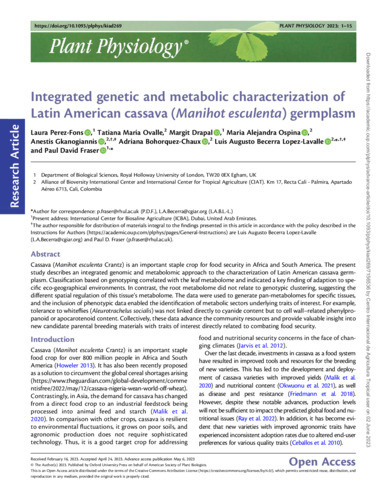Integrated genetic and metabolic characterization of Latin American cassava (Manihot esculenta) germplasm
Abstract
Cassava (Manihot esculenta Crantz) is an important staple crop for food security in Africa and South America. The present study describes an integrated genomic and metabolomic approach to the characterization of Latin American cassava germplasm. Classification based on genotyping correlated with the leaf metabolome and indicated a key finding of adaption to specific eco-geographical environments. In contrast, the root metabolome did not relate to genotypic clustering, suggesting the different spatial regulation of this tissue's metabolome. The data were used to generate pan-metabolomes for specific tissues, and the inclusion of phenotypic data enabled the identification of metabolic sectors underlying traits of interest. For example, tolerance to whiteflies (Aleurotrachelus socialis) was not linked directly to cyanide content but to cell wall-related phenylpropanoid or apocarotenoid content. Collectively, these data advance the community resources and provide valuable insight into new candidate parental breeding materials with traits of interest directly related to combating food security.

